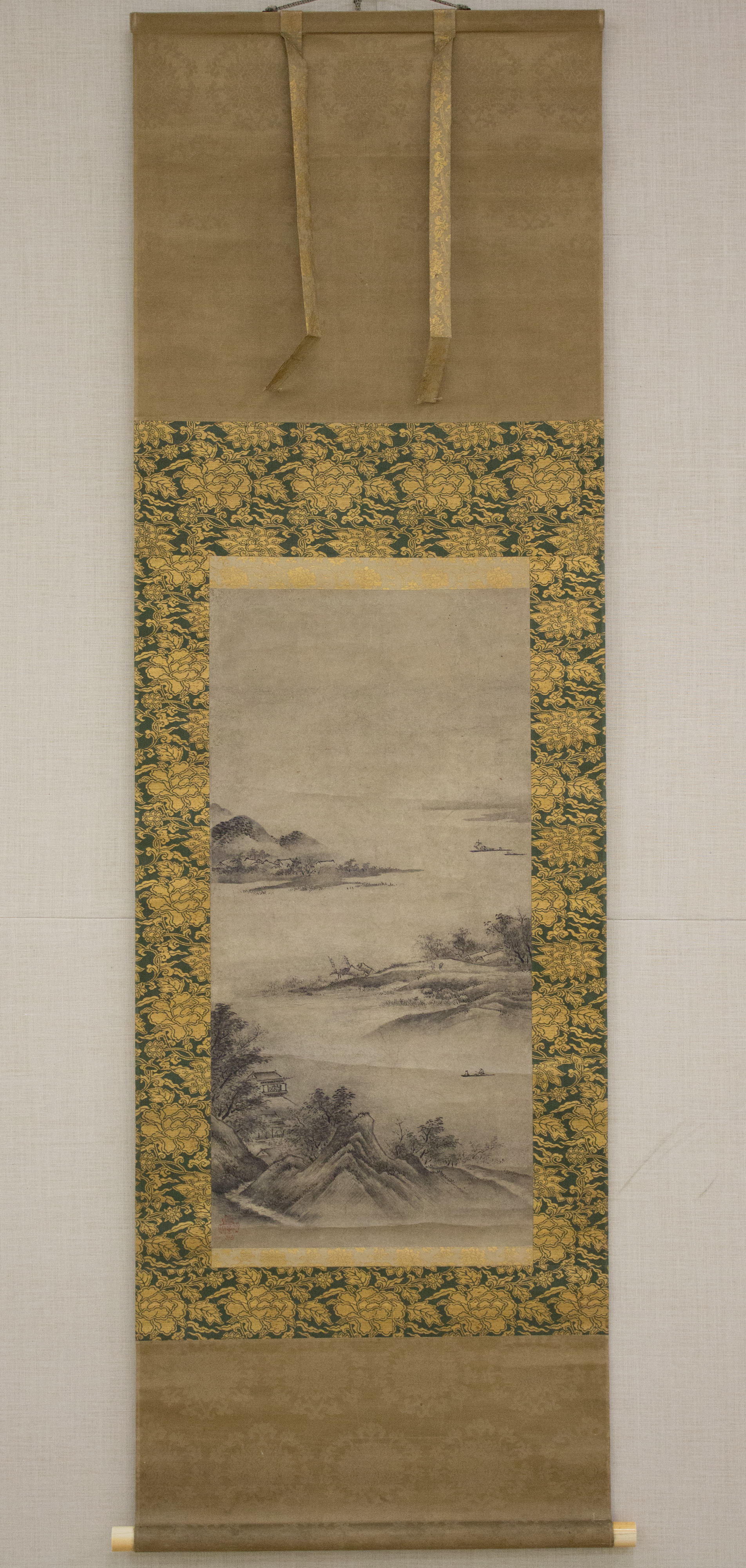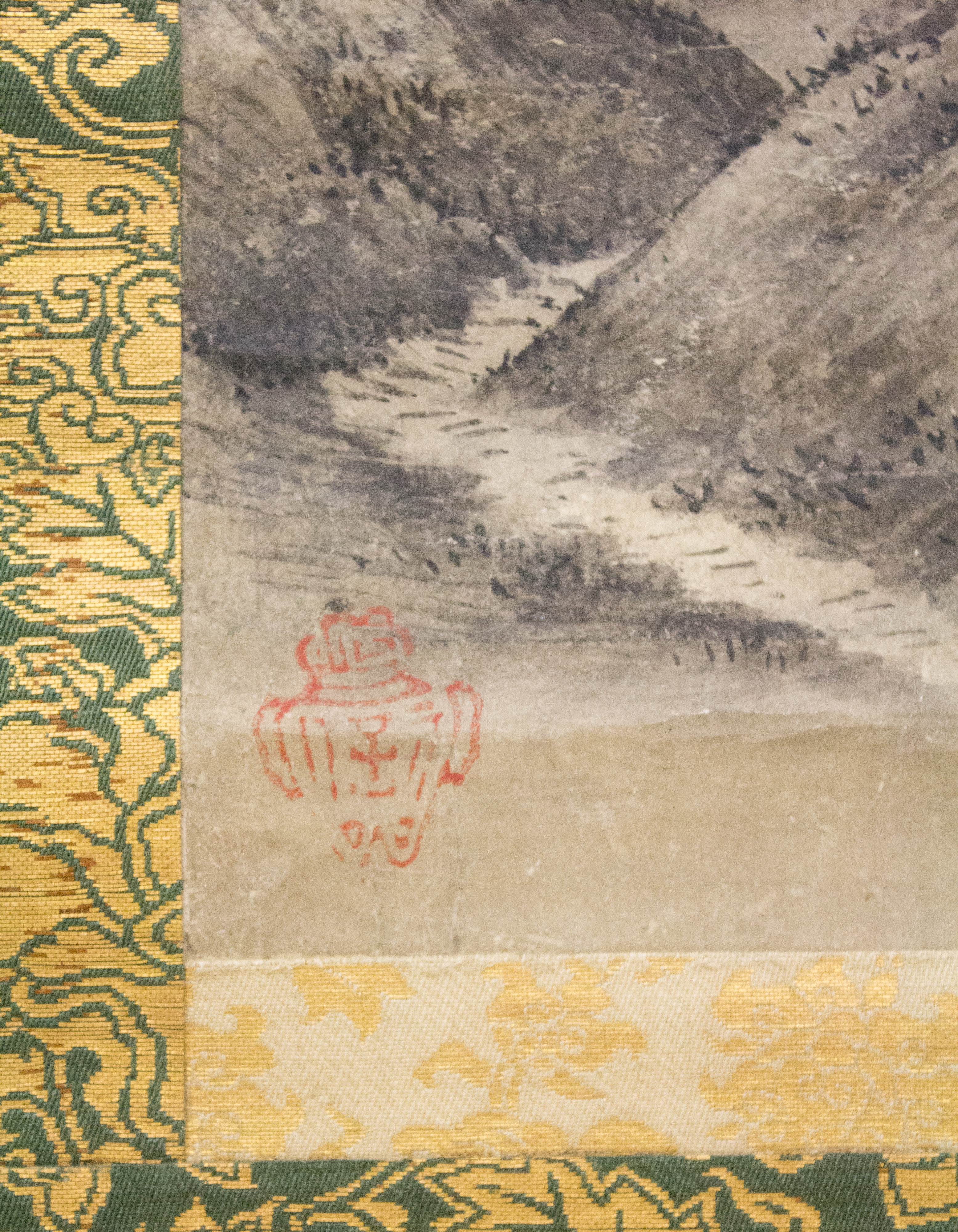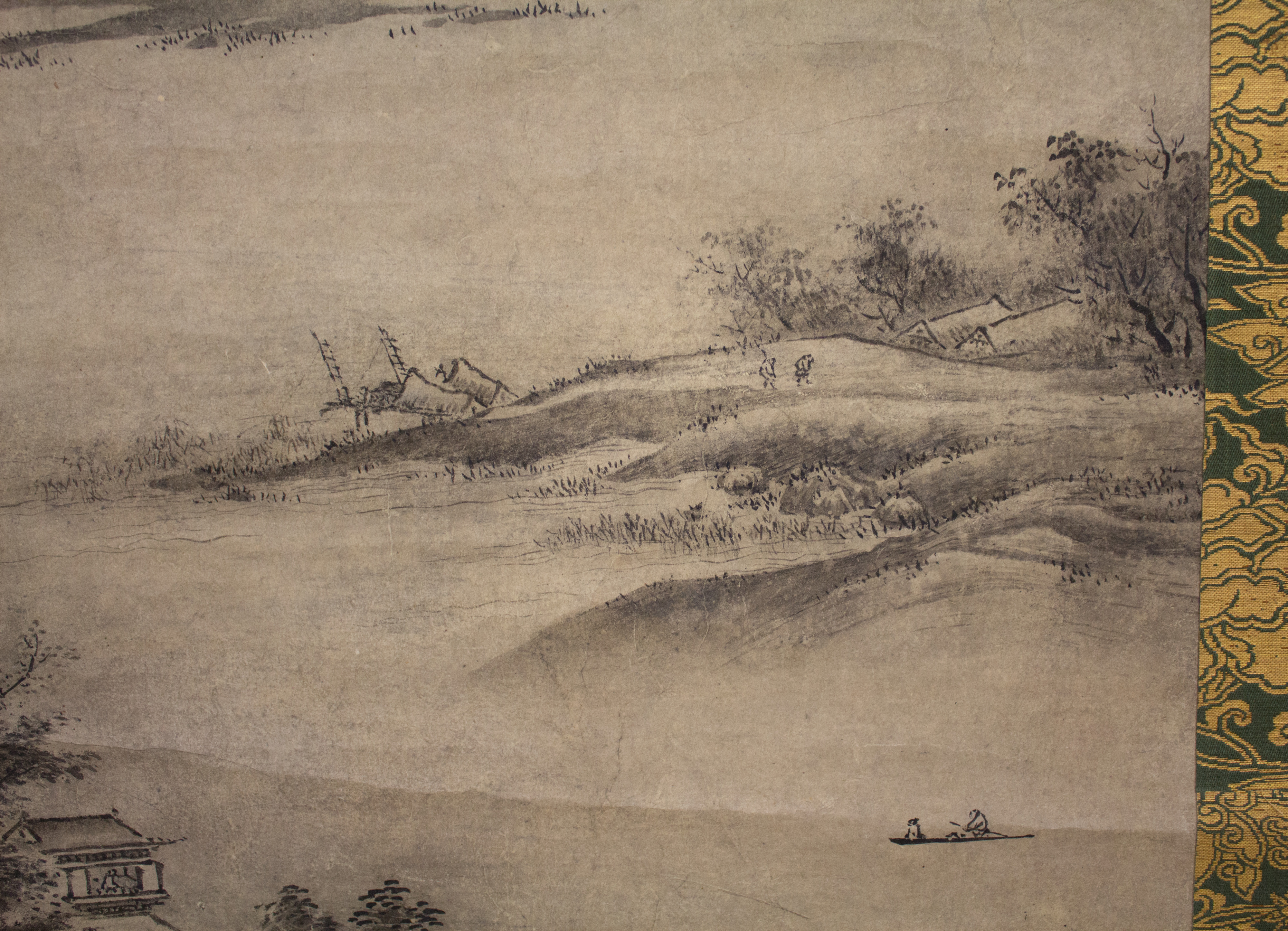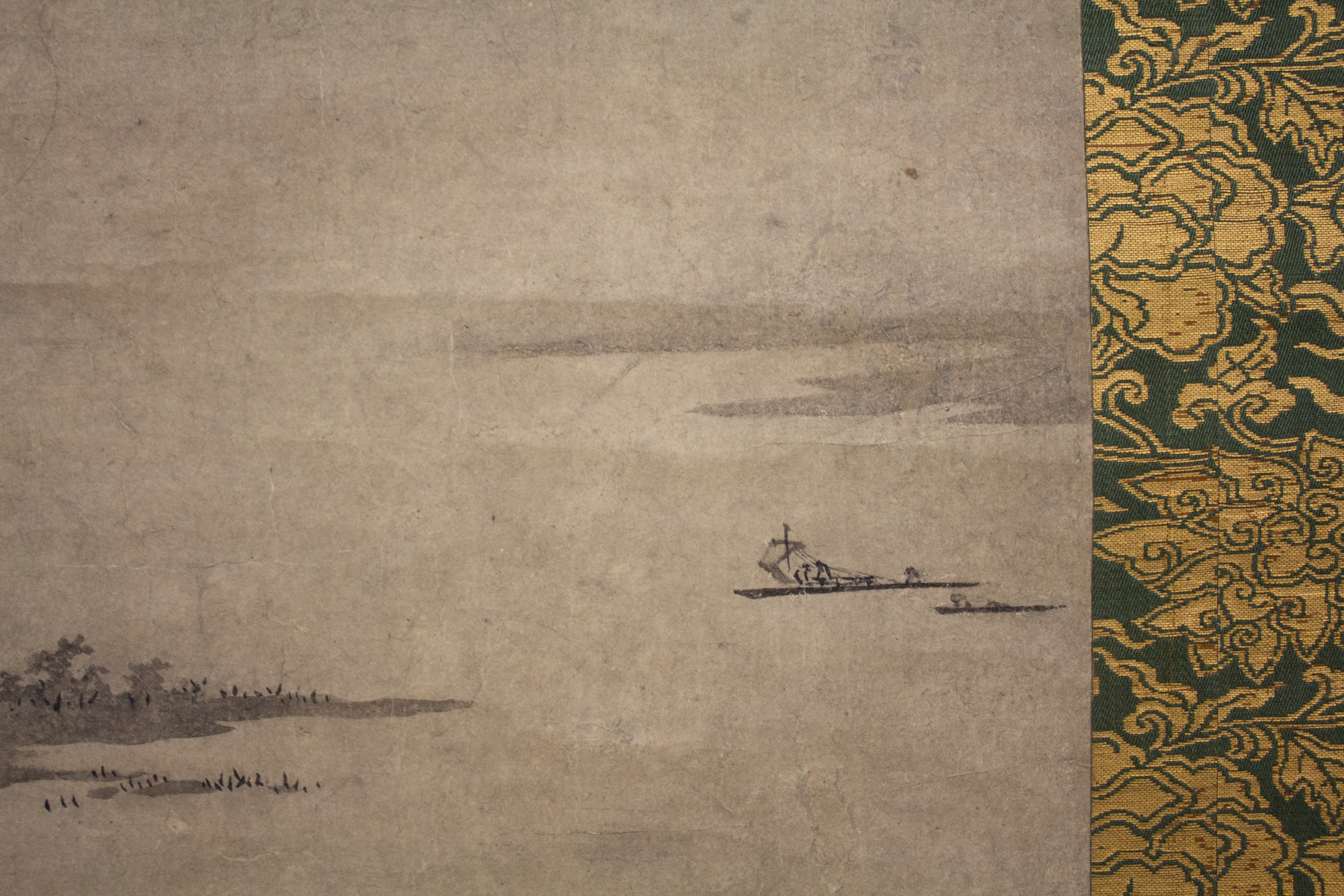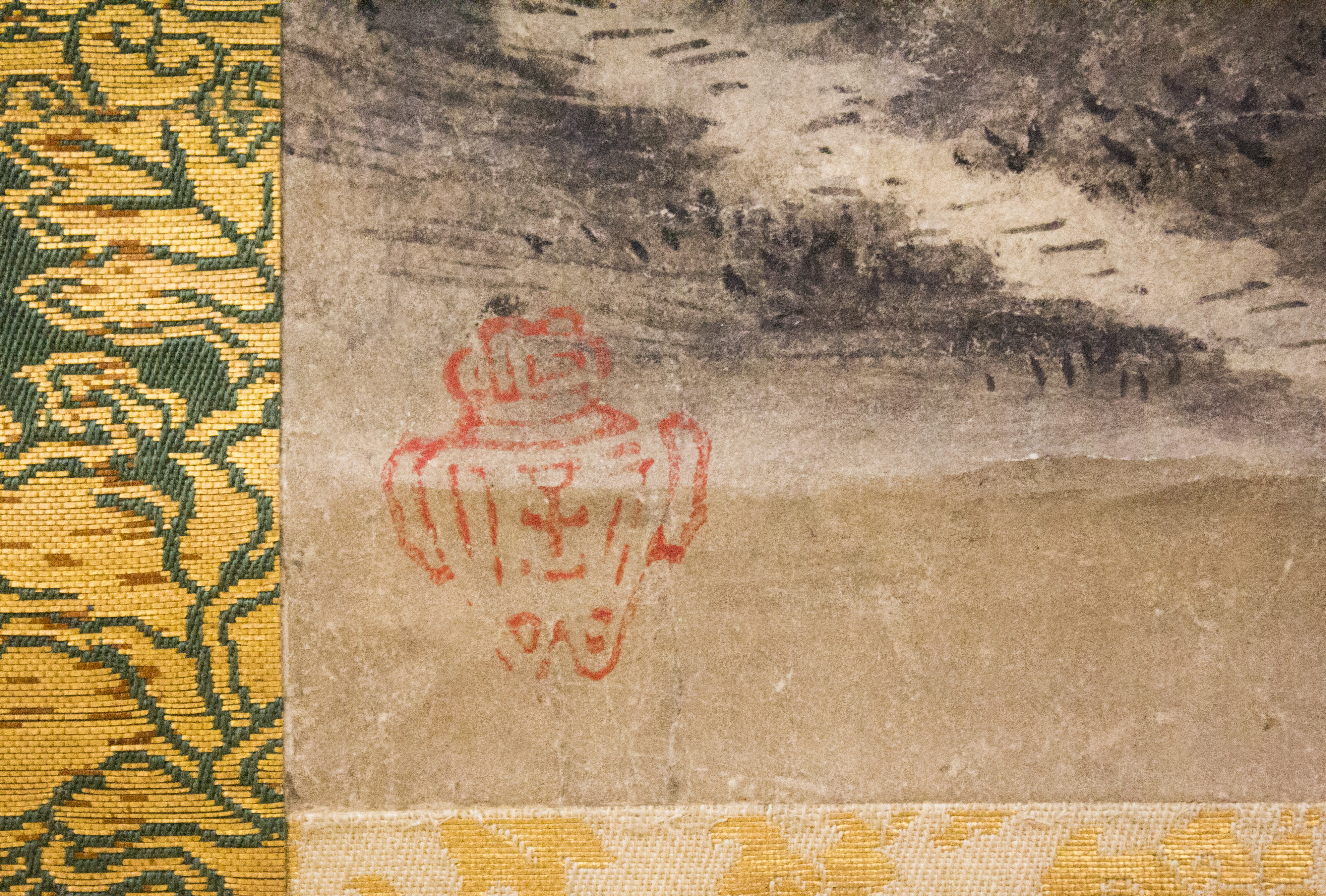River Landscape in Evening
Seal of Kano Motonobu Japanese
Not on view
This monochrome Japanese landscape painting portrays the activities of an imagined riverside locale in China. We "enter" the picture at lower right, where a man is ferried across the river toward luxurious buildings at lower left. A friend, seen through the open windows of a two-story pavilion, awaits his arrival and the beginning of an intimate evening gathering. Across the river in the right-hand middleground, fishermen have moored their thatched boats at shore at the end of the workday and walk inland toward two rustic cottages tucked into a grove of trees—a fishing village, in the vocabularly of East Asian landscape painting. Zigzagging back to the left as we move up the composition and further into the distance along the river, a cluster of low-lying, hillside buildings hints at another village, the destination for two more boats seen at upper right.
The painting bears the seal of Kano Motonobu, second-generation head of the Kano school, a formidable painting workshop that emerged in the late 1400s and dominated mainstream Japanese painting for the next four hundred years. However, a significant amount of overpainting added to the work over the centuries makes its attribution especially difficult. In some passages, heavy retouching completely masks the "original" image, which may have been painted in the Japanese capital of Kyoto in the 1500s, preventing an analysis of the artist's original brushwork.
This image cannot be enlarged, viewed at full screen, or downloaded.
This artwork is meant to be viewed from right to left. Scroll left to view more.




